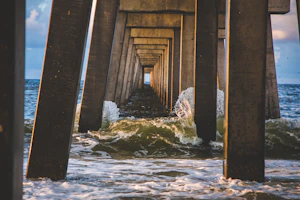Podcast
Questions and Answers
¿Cuál es una característica principal del pensamiento rígido?
¿Cuál es una característica principal del pensamiento rígido?
- Uso de múltiples enfoques creativos
- Adaptación a nuevas ideas
- Flexibilidad en la resolución de problemas
- Apego a patrones establecidos (correct)
El pensamiento lateral se diferencia del pensamiento creativo en que:
El pensamiento lateral se diferencia del pensamiento creativo en que:
- El pensamiento creativo se basa únicamente en la imaginación.
- El pensamiento lateral utiliza métodos no convencionales para resolver problemas. (correct)
- El pensamiento lateral busca soluciones convencionales.
- Ambos son lo mismo.
Una de las estrategias para fomentar el pensamiento creativo es:
Una de las estrategias para fomentar el pensamiento creativo es:
- Repetir las mismas soluciones.
- Limitar las ideas a un solo enfoque.
- Desalentar la colaboración en grupo.
- Fomentar la exploración de múltiples perspectivas. (correct)
¿Qué implica la transición del pensamiento rígido al creativo?
¿Qué implica la transición del pensamiento rígido al creativo?
Un enfoque del estudio del pensamiento se centra en:
Un enfoque del estudio del pensamiento se centra en:
Study Notes
Rigid Thinking
- Rigid thinking is characterized by a tendency to adhere to established patterns, rules, and frameworks.
- It often involves a limited capacity for flexibility and adaptability in problem-solving.
- Individuals with rigid thinking may struggle to consider alternative perspectives or solutions outside of their preconceived notions.
- This can lead to inflexibility in approaching situations and problems.
- It often results from strong adherence to habits and routines, potentially reinforcing biases.
Creative Thinking
- Creative thinking involves generating new ideas, solutions, and perspectives.
- It often involves the ability to think outside the box, challenge assumptions, and embrace novel approaches.
- Creative thinking often involves divergent thinking, where multiple possibilities are explored.
- It draws upon imagination, intuition, and a willingness to experiment with different ideas.
- This type of thinking emphasizes originality and innovation.
Lateral Thinking
- Lateral thinking is a problem-solving approach that emphasizes indirect and unconventional methods.
- It often involves finding creative solutions by looking at issues from a different angle rather than relying solely on logical step-by-step analysis.
- Lateral thinking often uses analogies, metaphors, and unexpected associations to find new perspectives.
- It promotes the questioning of existing assumptions and the exploration of alternative viewpoints.
- It differs from logical thinking in that it prioritizes unusual connections and unexpected solutions.
Studying Thinking
- Approaches to studying thinking include cognitive science, psychology, and related disciplines.
- Research often utilizes experiments, observations, and interviews to understand how people think and problem-solve.
- Assessment tools like standardized tests and creativity assessments can be used to gauge different thinking styles.
- Understanding the neural correlates of cognitive processes is a significant area of study.
- Different models of cognitive processes are put through stringent evaluation.
- Examining the interaction of various cognitive functions, such as memory, attention, and language, in shaping thought can provide insights.
- Methods for enhancing both creative and lateral thinking are a significant focus of research.
- This involves identifying relevant skills and developing training programs to further develop creative skills.
Connection Between Rigid, Creative, and Lateral Thinking
- Rigid thinking can hinder both creative and lateral thinking by limiting the exploration of alternatives.
- Creative thinking, on the other hand, provides potential solutions that diverge from typical approaches.
- Lateral thinking acts as a bridge between these two types of thinking. It challenges the constraints of rigid thinking and helps generate creative and innovative solutions.
- The relationship is dynamic—with creative thinking able to overcome rigid limitations and lateral thinking facilitating the creative process.
- Understanding these different thinking styles and their interplay is crucial for fostering innovation and problem-solving.
Studying That Suits You
Use AI to generate personalized quizzes and flashcards to suit your learning preferences.




